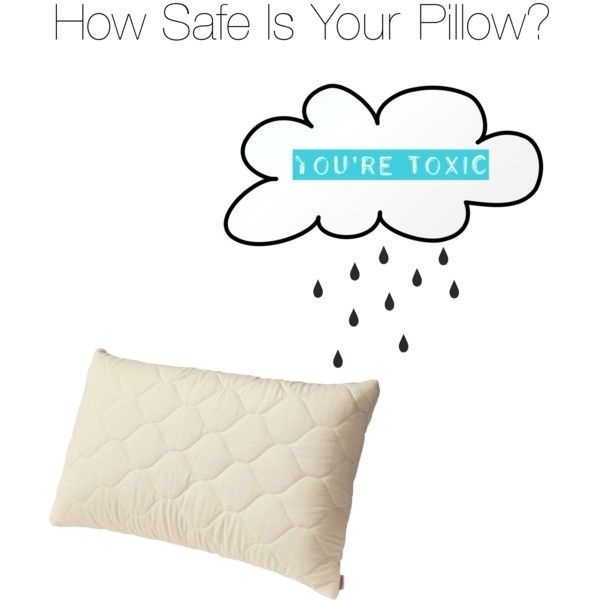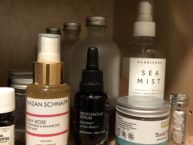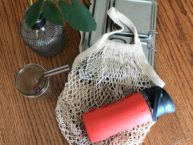Let’s have some Pillow Talk – How Safe Is Your Pillow? Sleeping pillows can contribute to lack of good sleep but did you know it could affect your health too? Everything from the type of fibers used for the filling, fabric covering, the contour factor, feel of the pillow, moisture absorption / retention factor, temperature regulation ability and finishes applied to the pillows can affect your sleep quality and overall health of your body in the long run. Learn how to look for safe pillows with this post – Pillow Talk – How Safe Is Your Pillow?
Image: Polyore
It’s a no brainer that lack of good sleep can affect your immune system and decrease productivity during the day but many of us are unaware of the toxic chemicals such as flame retardants used on pillows, which can ruin your health and damage your major organs in the long run. If you are suffering from headaches, dizziness, thyroid problems, puffy eyes, skin irritation, respiratory problems, nose bleeds, vertigo etc., it could be because of all the toxins in your house including the bed and pillow you sleep on every night! Considering how close your face comes in contact with a pillow, it’s pretty scary when you realize that many pillows can be covered with toxic chemical based flame retardant finishes on them. Also, chemicals can also be used at any point during fabric making – from growing cotton to fabric manufacturing and finishing processes like dying or printing. I personally realized how bad these chemicals could be for health when I started working in the textile / fabric department at an apparel manufacturing company. Being surrounded by loads and loads of freshly manufactured / processed fabrics all day everyday made everyone in our department including me sensitive to fiber dust in the air and chemical infused odors oozing off from those fabrics. Headaches, sneezing fits, eye or nose irritations etc. were everyday issues for us, and some even wore face masks to reduce their sensitivity! Here is my take on what to avoid when buying a pillow, why natural is better, how to clean your pillow and when to toss them out –
What To Avoid –
Flaming Foam – Polyurethane foam is a highly flammable petroleum based product and requires a flame retardant finish on it by law. Flame retardant chemicals can be highly toxic and can ruin your health. Click here to read why flame retardants are so bad for you. You can go for a polyester fill if you still want to buy a synthetic product and are looking for an affordable option. Even Dr, Oz recommends polyester fiber fill (click here).
Suffocating Synthetics – Synthetics are generally not breathable and comfortable so whenever possible it’s better to go for natural bio-based fabrics such as cotton or wool.
Why Natural Is Better –
Natural Wonders – Natural fills and fabrics have always been around for years and better option to choose when it comes to sleep area. Natural fabrics like cotton and wool don’t need flame retardant finish. Cotton is less flammable and wool is naturally flame resistant. Wool has good moisture wicking ability and great temperature control making it ideal for warm or cool season. Wool also resists growth of dust mites, making it great for people who have allergy problems. For more info click here. If you can buy organic then it’s better, but going for natural sources like cotton or wool is a good start. Silk, natural latex, buckwheat fill, Kapok, PLA are other natural materials to go for. To choose the right filling for your sleeping position, click here to learn more about it.
Clean Up –
For most type of fills, airing them outside under the sun or drying them in a dryer with tennis balls will refresh them up and get rid of the dust mites. For detailed instructions click here.
When To Toss –
A fold test is the best way to figure out if your pillows need to be washed or tossed away. When you fold the pillow in the centre and let it go, it is supposed to regain its shape and bounce back well. Read more about when to replace your pillow – here
Where to buy –
Credits and Further Reading:
Hope this post: Pillow Talk – How safe is your pillow? helps you find a pillow that is safe for you and your family. 🙂
“Never doubt that a small group of thoughtful, committed, citizens can change the world. Indeed, it is the only thing that ever has.” ― Margaret Mead
xx
Heel in Mint







18 comments for “Pillow Talk – How safe is your pillow?”